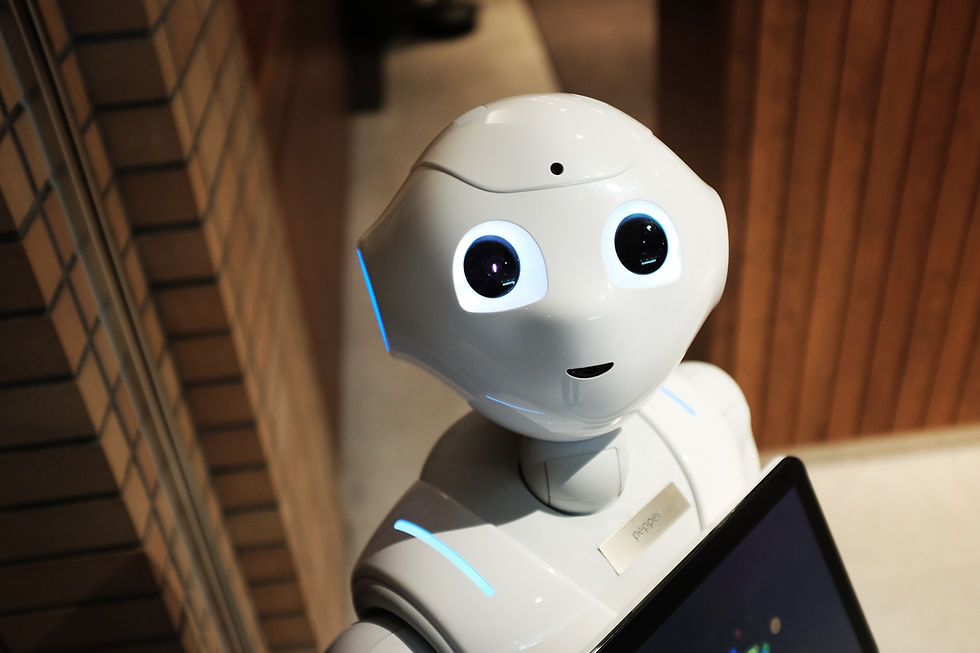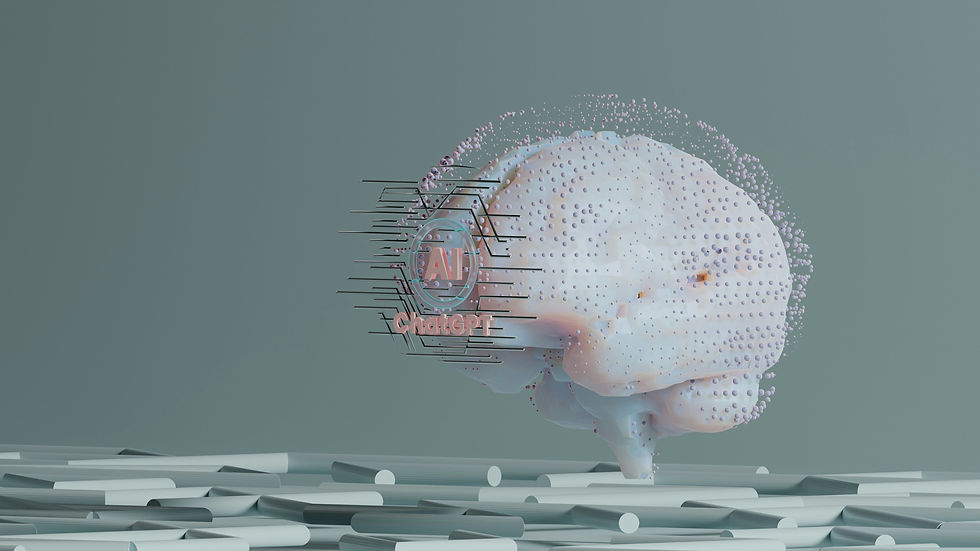Ethics in AI: Avoiding Bias in Automated Decision-Making
- Assali Bambissa
- 4 days ago
- 5 min read
Artificial intelligence has become the invisible hand shaping countless decisions that affect our daily lives. From determining who gets a loan to deciding which job applications receive attention, AI systems are increasingly trusted with choices that were once made exclusively by humans. Yet this technological revolution comes with a critical challenge: ensuring these automated systems make fair, unbiased decisions.
The promise of AI was partly built on the idea that machines could eliminate human prejudice from decision-making. After all, algorithms don't have personal feelings, cultural baggage, or conscious biases. However, the reality has proven more complex. AI systems can perpetuate and even amplify existing societal biases, sometimes in ways that are difficult to detect or understand.

The Hidden Nature of Algorithmic Bias
Bias in AI systems often emerges from the data used to train them. Historical data reflects past inequalities and discriminatory practices, which algorithms then learn to replicate. When a hiring algorithm is trained on decades of employment data where certain demographics were systematically underrepresented in leadership roles, it may learn to view those patterns as normal or even optimal.
Consider a real-world example: Amazon discovered that their AI recruiting tool was systematically downgrading resumes from women because it had been trained on historical hiring data from a male-dominated industry. The algorithm learned that being male was correlated with successful hires, not because men were inherently better candidates, but because historical hiring practices had been biased.
This type of bias is particularly insidious because it appears objective and data-driven. The algorithm isn't making emotional decisions or harboring conscious prejudices, yet it produces discriminatory outcomes that can be harder to challenge than obvious human bias.
Where Bias Manifests in AI Systems
Automated decision-making systems touch numerous aspects of our lives, and bias can emerge in each context with serious consequences:
Financial Services: Credit scoring algorithms may unfairly penalize individuals from certain zip codes or demographic groups, perpetuating economic inequality. These systems might use proxies for race or gender, such as shopping habits or social media activity, even when these characteristics aren't explicitly included in the model.
Criminal Justice: Risk assessment tools used to inform sentencing and parole decisions have been found to exhibit racial bias, predicting higher recidivism rates for Black defendants compared to white defendants with similar criminal histories. These predictions can influence life-altering decisions about imprisonment and freedom.
Healthcare: AI diagnostic tools trained primarily on data from certain demographic groups may perform poorly for underrepresented populations. Medical AI systems have shown reduced accuracy in diagnosing conditions in people with darker skin tones, potentially leading to delayed or incorrect treatment.
Employment: Beyond the Amazon example, many companies use AI to screen resumes, conduct initial interviews, or assess employee performance. These systems can perpetuate workplace discrimination by favoring candidates who fit historical patterns of success, which may exclude qualified individuals from diverse backgrounds.
Education: Algorithmic systems used in educational settings, from college admissions to student loan approvals, can systematically disadvantage certain groups, affecting access to educational opportunities and future career prospects.
The Technical Roots of Bias
Understanding how bias creeps into AI systems requires examining the technical processes behind machine learning. Bias can enter at multiple stages:
Data Collection: If training data isn't representative of the population the AI will serve, the system will make poor predictions for underrepresented groups. Historical data often reflects past discrimination, creating a cycle where AI systems learn to perpetuate unfair practices.
Feature Selection: The variables chosen to train AI models can inadvertently introduce bias. Even when protected characteristics like race or gender are excluded, other variables may serve as proxies. For instance, zip code might correlate strongly with race due to residential segregation patterns.
Algorithm Design: The mathematical objectives that AI systems optimize for can embed certain values or priorities. An algorithm designed to maximize short-term profit might make decisions that are profitable but unfair to certain groups.
Feedback Loops: Many AI systems learn from their own past decisions, creating potential feedback loops that can amplify initial biases. If a biased system makes unfair decisions, and those decisions generate new training data, the bias can become more entrenched over time.
Strategies for Building Fairer AI Systems
Addressing bias in AI requires intentional effort throughout the development lifecycle. Organizations serious about fair AI are adopting several key strategies:
Diverse and Representative Data: Ensuring training datasets adequately represent all groups that the AI system will impact is fundamental. This might involve actively collecting data from underrepresented populations or using techniques to augment existing datasets.
Bias Testing and Auditing: Regular evaluation of AI systems for biased outcomes across different demographic groups helps identify problems before they cause harm. This includes testing not just overall accuracy, but fairness metrics that examine how the system performs for different subgroups.
Algorithmic Transparency: Making AI decision-making processes more interpretable allows stakeholders to understand how decisions are made and identify potential sources of bias. This might involve using simpler, more interpretable models or developing explanation tools for complex systems.
Diverse Development Teams: Teams with varied backgrounds and perspectives are more likely to identify potential bias issues and consider the broader implications of AI systems. Homogeneous teams may have blind spots that lead to biased outcomes.
Stakeholder Engagement: Involving affected communities in the design and evaluation of AI systems helps ensure that fairness considerations reflect real-world needs and values rather than just technical metrics.
Continuous Monitoring: Bias can emerge or evolve after AI systems are deployed, making ongoing monitoring essential. This includes tracking system performance across different groups and being prepared to make adjustments when bias is detected.
The Regulatory Landscape
Recognition of AI bias issues has prompted regulatory responses around the world. The European Union's AI Act includes provisions for high-risk AI systems that could impact fundamental rights. Several U.S. states and cities have enacted laws requiring algorithmic audits for hiring tools. These regulations reflect growing awareness that the stakes of biased AI are too high to rely solely on voluntary industry efforts.
However, regulation alone isn't sufficient. Technical standards, industry best practices, and organizational culture all play crucial roles in addressing AI bias. The most effective approaches combine regulatory requirements with proactive industry leadership and community engagement.
The Path Forward
Building fair AI systems isn't just a technical challenge, it's a societal imperative that requires ongoing commitment and collaboration. As AI becomes more pervasive in decision-making, the cost of biased systems grows higher. Unfair algorithms don't just produce bad outcomes for individuals; they can perpetuate and amplify societal inequalities at scale.
The goal isn't to achieve perfect fairness, which may be technically impossible given the complexity of human society and the limitations of data. Instead, the objective should be continuous improvement toward more equitable outcomes, with transparency about limitations and ongoing efforts to address bias when it's discovered.
This requires a fundamental shift in how we think about AI development. Fairness can't be an afterthought or a box to check at the end of the development process. It must be embedded throughout the entire lifecycle of AI systems, from initial problem formulation through deployment and ongoing monitoring.
The stakes are too high to accept biased AI as an inevitable trade-off for technological progress. By prioritizing fairness alongside performance, investing in diverse teams and inclusive processes, and maintaining vigilance about bias throughout AI system lifecycles, we can work toward automated decision-making that serves everyone fairly. The future of AI isn't just about building smarter systems, it's about building systems that reflect our values and contribute to a more equitable society.





Comments